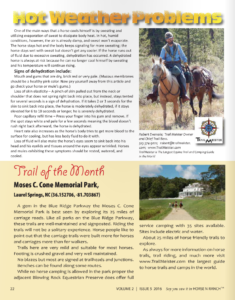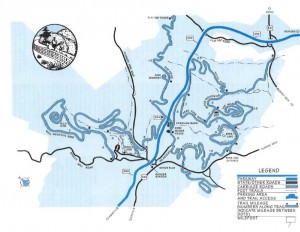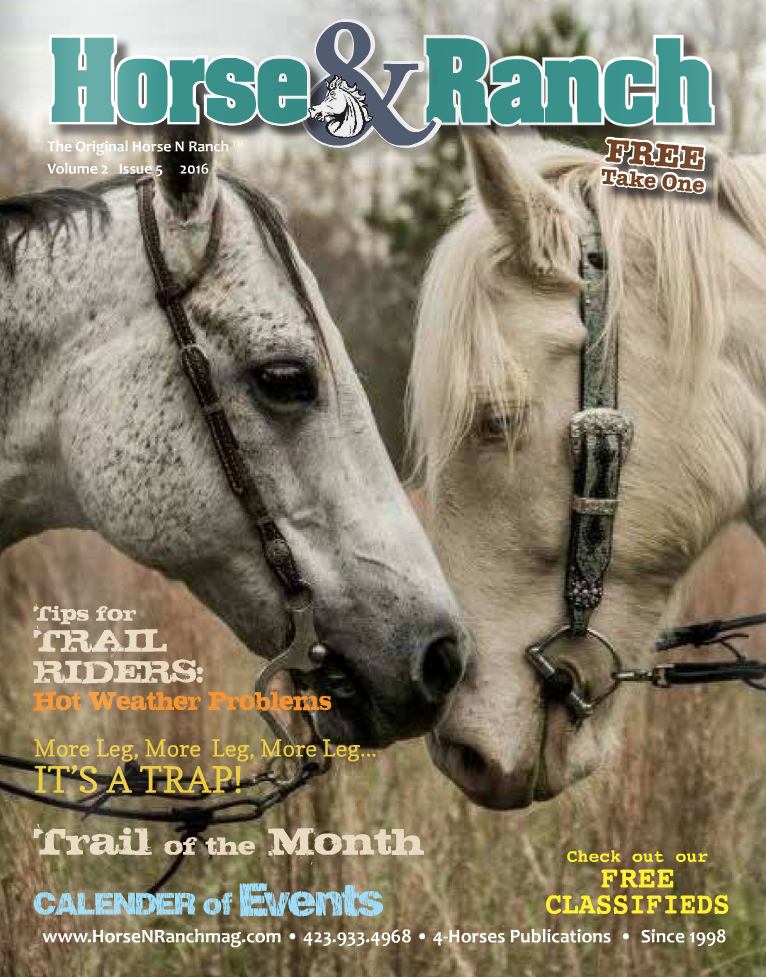 Hot Weather Problems
Hot Weather Problems
As published by HorseNRanch Magazine June 2016
One of the main ways that a horse cools himself is by sweating and utilizing evaporation of sweat to dissipate body heat. In hot, humid conditions, however, the air is already damp, and sweat won’t evaporate. The horse stays hot and the body keeps signaling for more sweating; the horse stays wet with sweat but doesn’t get any cooler. If the horse runs out of fluid due to excessive sweating, dehydration has occurred. A dehydrated horse is always at risk because he can no longer cool himself by sweating and his temperature will continue rising.
Signs of Dehydration include:
- Mouth and gums that are dry, brick red or very pale. (Mucous membranes should be a healthy pink color. Now pry yourself away from this article and go check your horse or mule’s gums.)
- Loss of skin elasticity – A pinch of skin pulled out from the neck or shoulder that does not spring right back into place, but instead, stays tented for several seconds is a sign of dehydration. If it takes 2 or 3 seconds for the skin to sink back into place, the horse is moderately dehydrated, if it stays elevated for 6 to 10 seconds or longer, he is severely dehydrated.
- Poor capillary refill time – Press your finger into his gum and remove. If the spot stays white and pale for a few seconds meaning the blood doesn’t rush right back afterward, the horse is dehydrated.
- Heart rate also increases as the horse’s body tries to get more blood to the surface for cooling, but has less body fluid to do it with.
- Loss of fluid will also make the horse’s eyes seem to sink back into his head and his eyelids and tissues around the eyes appear wrinkled. Horses and mules exhibiting these symptoms should be rested, watered, and cooled.
Trail of the Month
Moses C. Cone Memorial Park, Laurel Springs, NC (36.152706, -81.703867)

Moses H. Cone Memorial Park
A gem in the Blue Ridge Parkway the Moses C. Cone Memorial Park is best seen by exploring its 25 miles of carriage roads. Like all parks on the Blue Ridge Parkway, these trails are well-maintained and signposted. Riding the trails will not be a solitary experience. Horse people like to point out that the carriage trails were built more for horses and carriages more than for walkers.
Trails here are very mild and suitable for most horses. Footing is crushed gravel and very well maintained.
- No blazes but most are signed at trailheads and junctions.
- Benches can be found along some routes.
- While no horse camping is allowed in the park proper the adjacent Blowing Rock Equestrian Preserve does offer full service camping with 35 sites available. Sites include electric and water.
- About 25 miles of horse friendly trails to explore.
- Click here for details on the Moses C Cone Memorial Park.
As always for more information on horse trails, trail riding, and much more visit www.TrailMeister.com the largest guide to horse trails and camps in the world.


